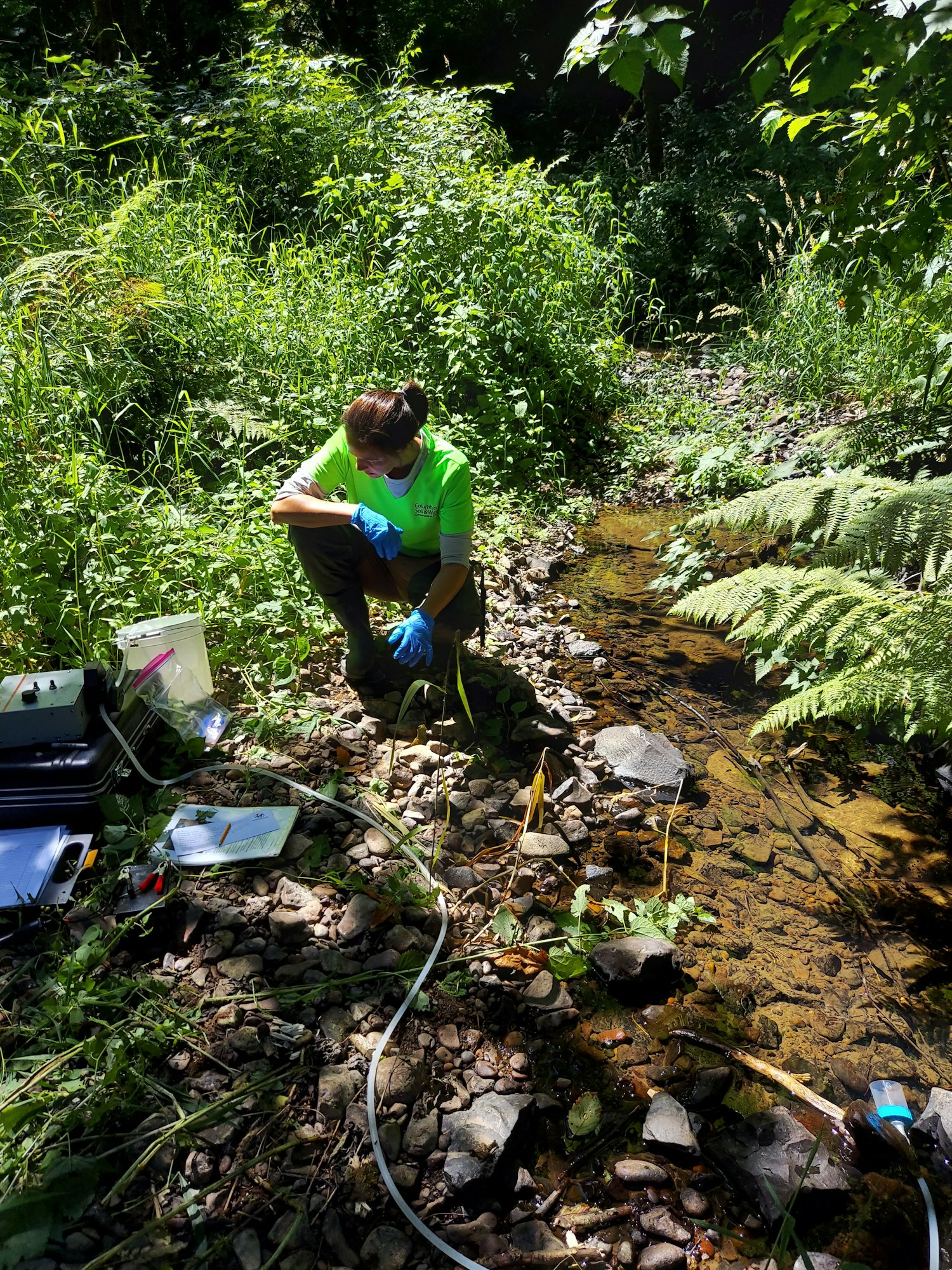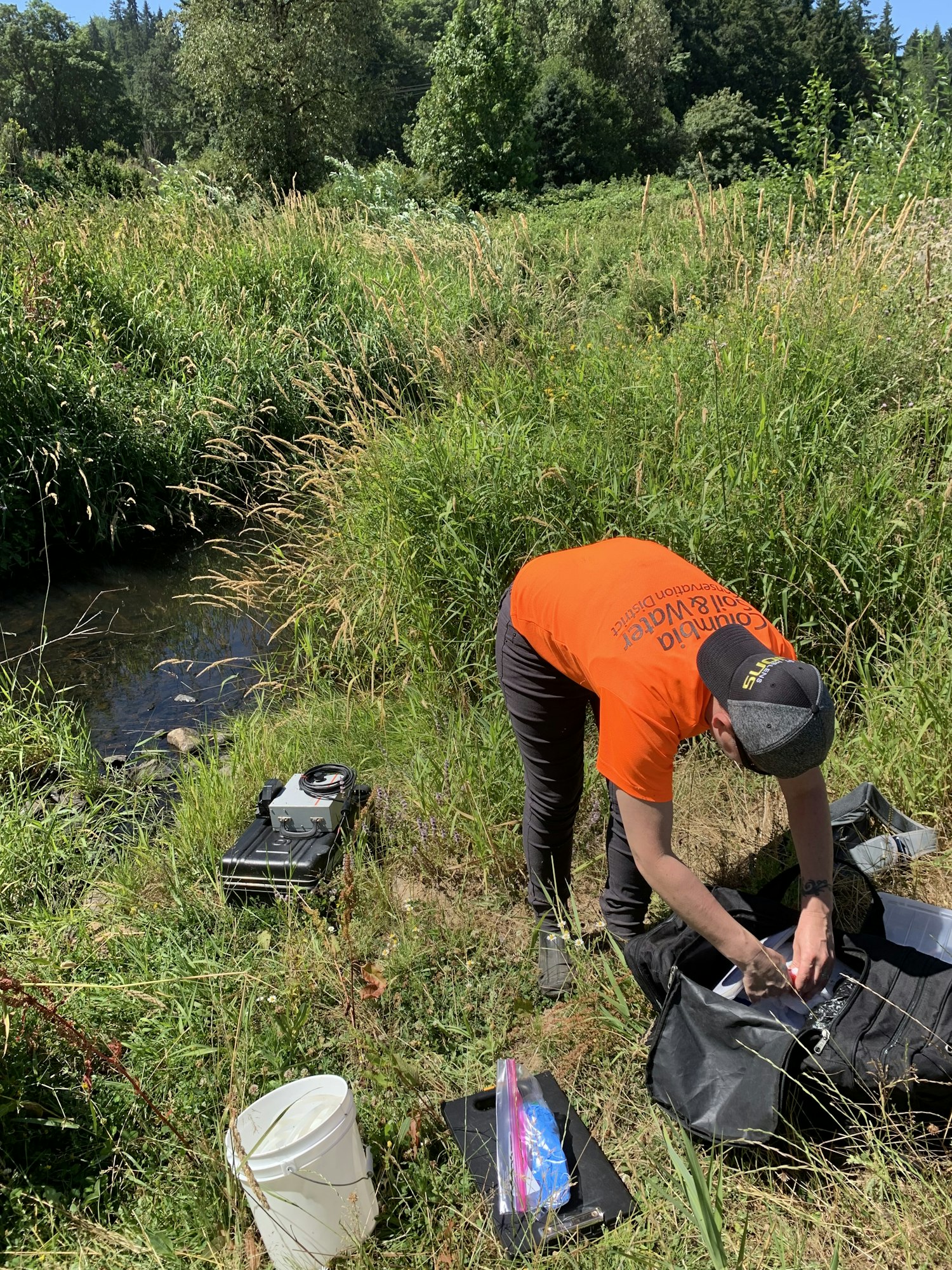eDNA Sampling for Pacific Lamprey

This summer the Columbia SWCD has been collecting samples throughout the County to be tested for the presence of Pacific lamprey. Samples will be sent to a US Forest Service lab in Montana for eDNA testing. The lab fees and all of the materials needed to collect the samples
are paid for by a grant to the National Genomics Center for Wildlife and Fish Conservation,
a department of the US Forest Service. In order to qualify for the grant funding, the program requires comprehensive collection throughout designated watersheds. There are 3 main watersheds within Columbia County: the Nehalem, the Lower Columbia River – Clatskanie River, and the Lower Willamette. These watersheds cross multiple jurisdictions and county lines including Clatsop, Tillamook, Multnomah, Clackamas, Clark, Cowlitz, and Wahkiakum counties.
In order to cover these areas and collect all of the samples required, the Columbia SWCD engaged with partners throughout the region to create a multi-agency effort. In the end, 5 agencies (the Columbia SWCD, Lower Nehalem Watershed Council, Upper Nehalem Watershed Council, Clark County Conservation District, and Cowlitz Indian Tribe) actively participated in collecting samples and 1 agency (W. Multnomah SWCD) consulted on sampling sites.


The goal of the program is to learn more about Pacific lamprey habitat and distribution. Lamprey are native to our region and, like salmon, were an important part of Native American diets and culture. They are a vital part of our aquatic ecosystems and food webs. Like salmon, Pacific lamprey are anadromous, starting their lives in streams and rivers and migrating to the ocean as adults. Also, like salmon they return to freshwater systems to spawn. Despite the similarities, they differ from salmon in some key ways. They are not as strong of swimmers and can be hindered by strong flow velocities. They use their sucker mouth to attach to structures and rocks to keep them from being carried downstream. They also have slightly different habitat needs from salmon. After hatching, young lamprey burrow into fine sediments where they live as filter feeders for a number of years. We are learning a lot about Pacific lamprey these days, however, there is still a lot we don’t know. This program is just one of the ways in which scientists are trying to fill in the gaps.
Through this program, the Columbia SWCD and other participating agencies collected samples from waterbodies to be checked for Pacific lamprey eDNA, or environmental DNA. eDNA testing relies on PCR (Polymerase Chain Reactions) lab techniques to amplify certain genetic sequences found in the sample which are used to detect the presence of an organism in a waterbody. The technology is still fairly new, but it is evolving rapidly and has many exciting and useful applications, particularly in the field of conservation. For now, the testing can reveal if a target species is present or has been present in a waterbody within the recent past. Collecting this information will help us better understand the life cycles and strategies of Pacific lamprey as well as where we should focus restoration efforts to maximize multi species benefits.
